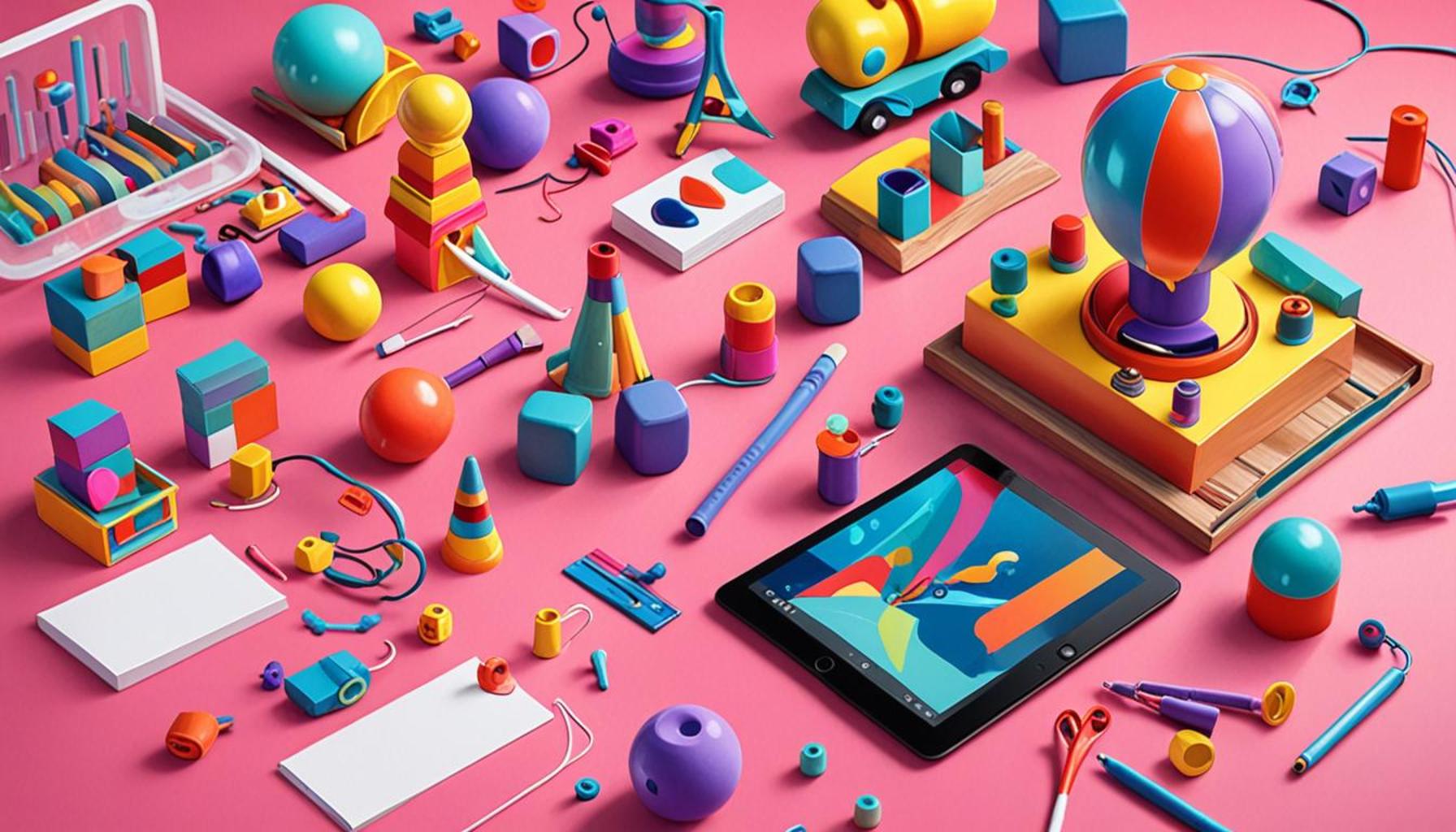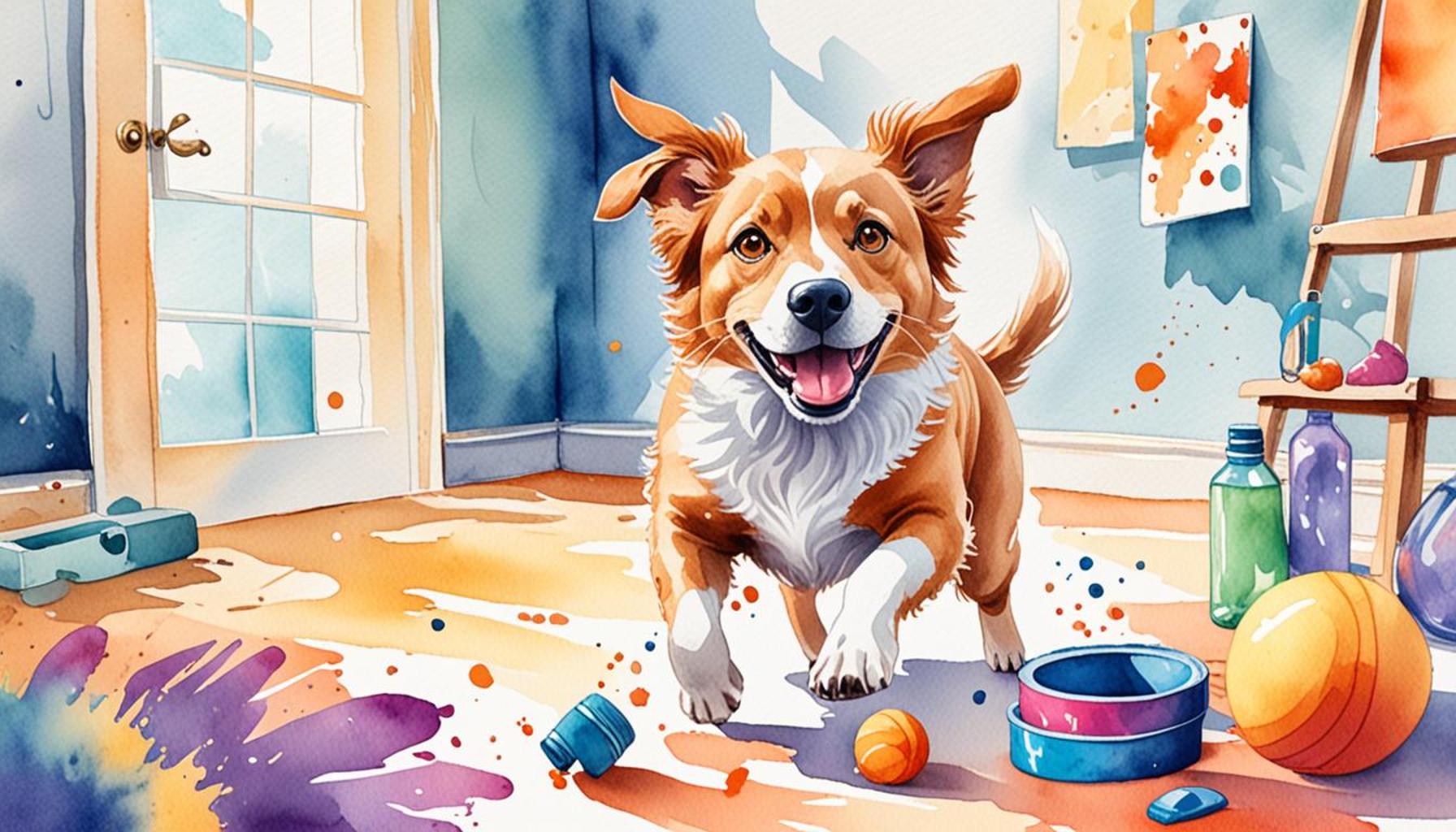Using Interactive Toys to Enhance Training Sessions

Revitalizing Training Sessions
Training sessions often face challenges of monotony, leading to disengaged participants and ineffective learning outcomes. However, interactive toys emerge as an engaging solution, providing a refreshing avenue to enhance training experiences. These tools not only serve as entertainment but also integrate learning in a way that resonates with various skills and knowledge areas.
So, why stick to traditional training formats that might fail to hold attention? The introduction of dynamic elements through interactive toys is essential. Here are some compelling benefits of utilizing these innovative tools in your training sessions:
- Enhanced Engagement: Toys naturally spark curiosity and playfulness, ensuring that participants remain focused and motivated. For instance, using a remote-controlled robot can attract participants’ attention while they learn about programming and problem-solving through enjoyable hands-on activity.
- Multisensory Learning: Interactive toys cater to various learning styles—be it visual, auditory, or kinesthetic. This multisensory approach helps enhance information retention. Visual learners may benefit from colored building blocks, while kinesthetic learners can engage directly by constructing or manipulating the toys.
- Encouraged Collaboration: Many interactive toys promote teamwork and effective communication among participants. Board games designed for group play can teach strategic thinking and collaboration, as players must work together to achieve common objectives.
Incorporating these tools can dramatically transform the traditional landscape of training. For example, in corporate environments, a simulation game involving decision-making can mirror real-life business challenges that employees might face, allowing them to practice skills in a low-risk setting. Similarly, in educational settings, interactive toys like building sets can enhance STEM learning, providing students with a tangible way to grasp complex concepts.
The growing trend of utilizing interactive toys in training underscores a cultural shift within organizations prioritizing more effective learning methodologies. Various sectors, from healthcare to technology, are increasingly adopting these engaging training tools to improve outcomes and foster a culture of continuous learning.
As we delve deeper into how interactive toys can invigorate training sessions, the importance of strategic implementation cannot be overlooked. It’s crucial to align the choice of toys with the training objectives to maximize their effectiveness. This not only creates an engaging environment but also leads participants to discover a newfound enthusiasm for learning. Join us as we explore insightful recommendations for successfully integrating these tools into your training programs.

LEARN MORE ABOUT PET HEALTH: Click here
Transformative Approaches to Learning
In an age where technology and innovation are redefining the landscape of education and training, interactive toys stand out as a pivotal element for enhancing participant engagement and retention. Utilizing these tools in training sessions transforms traditional learning environments into dynamic and collaborative spaces. But how exactly do interactive toys break the mold of conventional teaching methods?
One of the key advantages of interactive toys is their ability to foster an atmosphere of playful learning. By infusing elements of play, trainers can mitigate anxiety and resistance often associated with serious learning environments. Activities that involve gamification—such as role-playing games or puzzles that require critical thinking—allow participants to embrace challenges and trial-and-error approaches in a supportive environment. These experiences not only promote skill acquisition but also instill a sense of confidence in applying new knowledge.
Crafting Engaging Learning Experiences
To achieve effective training outcomes through interactive toys, it is essential to select tools that resonate with the objectives of the program. Here are a few categories of interactive toys that can strategically enhance training sessions:
- Robotics Kits: These sets encourage participants to engage in coding and logical reasoning as they build and program robots. Such activities introduce fundamental STEM concepts while cultivating problem-solving skills.
- Board Games: Intentionally designed for collaboration, board games can simulate real-life scenarios, promoting teamwork and strategic thinking. For example, games based on business strategies can provide meaningful insights into market dynamics.
- 3D Puzzles and Building Blocks: These tactile tools cater to kinesthetic learners, allowing them to manipulate and construct, which enhances spatial reasoning and creativity.
- Simulations and Virtual Reality: Utilizing tech-driven toys, such as VR headsets, can immerse participants in realistic scenarios, enabling them to navigate complex situations and make decisions that mirror what they might encounter in real life.
The transformation from a passive recipient of information to an active participant in the learning process can have lasting impacts. Research indicates that active learning methodologies, which include the use of interactive toys, can lead to a retention rate of 75% or higher, compared to only 5% for traditional lecture settings. This remarkable difference highlights why organizations are increasingly adopting these interactive tools.
As we further explore the integration of interactive toys in training, it becomes evident that thoughtful selection and application of these tools are essential for achieving specific training goals. The right interactive toys, aligned with clear objectives, create an environment that provides both learning and enjoyment, rekindling the innate curiosity in every participant. In the next section, we will delve into practical recommendations for implementing these toys effectively in diverse training scenarios, so stay tuned for expert insights.
| Category | Advantages |
|---|---|
| Cognitive Skill Development | Interactive toys challenge the mind, enhancing problem-solving skills. |
| Engagement and Focus | These toys capture attention, leading to improved focus during training. |
Interactive toys are revolutionizing the way training sessions are conducted. One significant advantage is in the area of cognitive skill development. By presenting challenges, these toys encourage users to think critically and enhance their problem-solving abilities, essential skills in both personal and professional settings.Additionally, the aspect of engagement and focus cannot be overlooked. Traditional training tools often fail to hold attention, whereas interactive toys provide a dynamic environment that captivates users. The excitement generated by these toys can significantly lead to improved concentration during training sessions. Through targeted use of interactive toys, trainers can create an enhanced learning experience that not only prepares individuals better but also makes training sessions more enjoyable. This innovative approach encourages further exploration into how different types of interactive toys can be utilized across various training environments to maximize learning potential.
DON’T MISS: Click here for essential tips on pet dental health
Maximizing Engagement Through Hands-On Learning
The effectiveness of training sessions can be significantly amplified by integrating interactive toys that promote hands-on learning experiences. This method not only boosts engagement but also appeals to a range of learning styles, ensuring that every participant can derive value from the training session. When trainers introduce interactive elements, the focus shifts to collaboration and exploration, fostering an environment that encourages participants to think outside the box.
One compelling approach is through the use of modular learning systems. These versatile toys allow users to build and customize their learning experiences. For instance, kits that contain various components to create electronic circuits can challenge participants to explore principles of electricity and engineering firsthand. As learners experiment, they engage in problem-solving and critical thinking, essential skills in today’s workforce.
Examples of Successful Implementation
Numerous organizations have successfully integrated interactive toys into their training routines, demonstrating the effectiveness of this approach. One notable example is the integration of LEGO Serious Play in corporate training. Organizations like Google and Deloitte have adopted this method to enhance team collaboration and creativity. By using LEGO bricks, participants can physically build representations of their thoughts and ideas. This not only nurtures innovation but also eliminates barriers of communication, as visual representations often lead to more open discussions.
Furthermore, the use of augmented reality (AR) in interactive toys has opened new doors for immersive learning experiences. Companies like Blippar and Merge AR have developed platforms that incorporate AR features, allowing participants to visualize concepts in a three-dimensional space. Training sessions that utilize AR encourage exploration and curiosity, as learners can interact with complex subjects more profoundly than traditional methods allow.
Creating Personalized Learning Paths
Another trend that is gaining traction is the seed of personalization in training facilitated by interactive toys. Tools that incorporate adaptive learning technologies can adjust the difficulty and complexity based on the individual’s progress, ensuring that sessions remain challenging yet attainable. For example, coding toys that adapt to a learner’s skill level enable participants to progress at their own pace while building foundational programming skills.
The use of feedback mechanisms in many interactive toys further enhances the learning experience. Instant feedback allows learners to evaluate their performance, make adjustments, and grasp concepts more effectively. This process encourages self-directed learning and accountability, critical factors in professional development.
- Real-World Applications: Incorporating simulations based on industry scenarios can provide participants with practical experiences. For example, healthcare training using interactive mannequins allows learners to practice life-saving techniques in a controlled environment.
- Cross-Generational Learning: With a diverse workforce, interactive toys can bridge generational gaps. Younger employees may relate more closely to technologically advanced toys, while older generations can provide contextual knowledge, enriching the learning environment.
As we assess the myriad ways interactive toys can enhance training sessions, it is compelling to consider the implications of their adaptation in various industries. With evolving corporate training landscapes, the potential for interactive toys to reshape learning methodologies and improve outcomes is more essential than ever. The next segment will explore the logistical aspects of incorporating these tools into training programs, detailing how organizations can optimize their investments and implement interactive toys for maximum impact.
DISCOVER MORE: Click here for essential tips
Unlocking the Future of Learning
In conclusion, the integration of interactive toys into training sessions is reshaping the landscape of adult education in remarkable ways. By adopting hands-on learning tools, organizations are not only increasing participant engagement but are also catering to a spectrum of learning styles. From modular learning systems that encourage creativity and critical thinking to augmented reality applications that offer immersive experiences, these innovative resources provide dynamic ways to absorb knowledge.
The success stories from various industries underscore the effectiveness of these methods. As companies like Google and Deloitte have demonstrated, using collaborative tools like LEGO Serious Play can help teams break down communication barriers and foster innovative thinking. Furthermore, the rise of adaptive learning technologies allows training to be customized, ensuring that learners can progress at their own pace while feeling continually challenged.
As we move forward, embracing the full potential of interactive toys could lead to a more skilled and adaptable workforce. The real-world applications, from healthcare simulations to bridging generational gaps in understanding and communication, highlight the transformative power of engaging training tools. It is crucial for organizations to consider how they can incorporate these resources into their learning environments proactively. By leveraging such innovative teaching aids, businesses can not only enhance the training experience but also drive sustainable growth and development within their teams. The future of training is interactive—will your organization take the leap?


